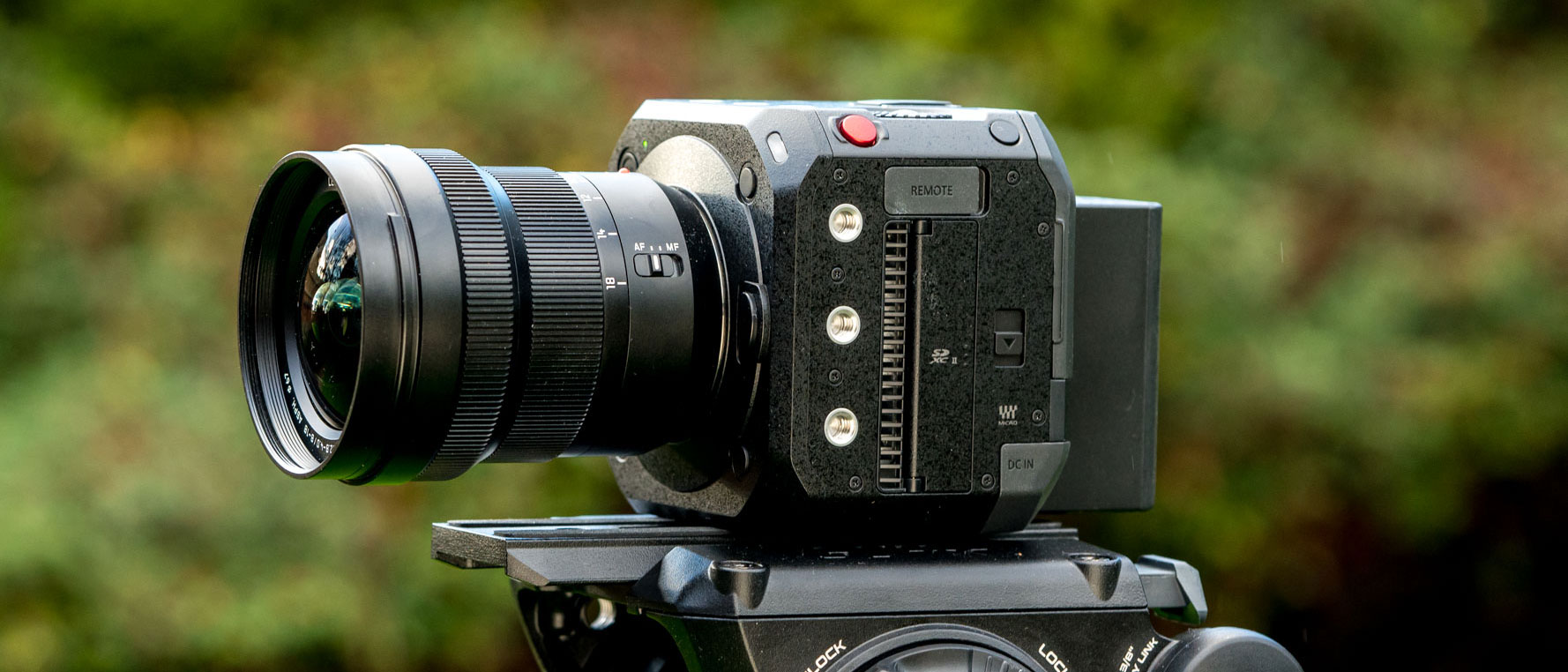Digital Camera World Verdict
For serious video shooters, the Panasonic Lumix BGH1 boxcam can make a lot of sense as it can be rigged up for a multitude of different uses. With the sensor technology and 10-bit recording of the popular Lumix GH5S, Varicam colour science and Dual Native ISO sensor as found in the high-end Panasonic camcorders, and a small modular body, it can be pressed into service for a huge range of high-quality productions. From documentary to full-on cinematic films, event coverage and live streaming, the BGH1 can be used for just about everything a professional filmmaker might need. But it’s definitely not a walk-around hybrid camera for people who like to shoot stills and video.
Pros
- +
Small and light
- +
Excellent low light performance
- +
Can be rigged up for lots of uses
Cons
- -
Quirky handling with no screen or EVF
- -
Doesn’t even come with a battery
- -
AF system is not the best
Why you can trust Digital Camera World
The Panasonic Lumix BGH1 is called a box camera for obvious reasons. It’s pretty much a cube with a lens mount on the front, a sensor inside and connectors on the back. No viewfinder or even LCD screen to make setting changes. Instead, you use the ¼-20 threaded holes to add on the accessories that you need to make it into the sort of camera you want.
American cinema camera giant RED has used this concept for years with its high-end cameras which are pretty much a box that you dress up for the shoot you are about to do. This is in complete contrast to other Panasonic Micro Four Thirds cameras, such as the Panasonic Lumix G9 and GH5 II, which are complete and ready to start shooting with, straight out of the box.
But the new Panasonic takes this multi-use strategy even further, as it has built-in tech to enable live streaming or recording YouTube videos and connectivity to use it as a remote camera on location. Alternatively you can dress it up as a cinema camera with cine primes and a follow-focus to shoot movies, or use an AF lens and press it into action as a run-and-gun camera for documentaries.
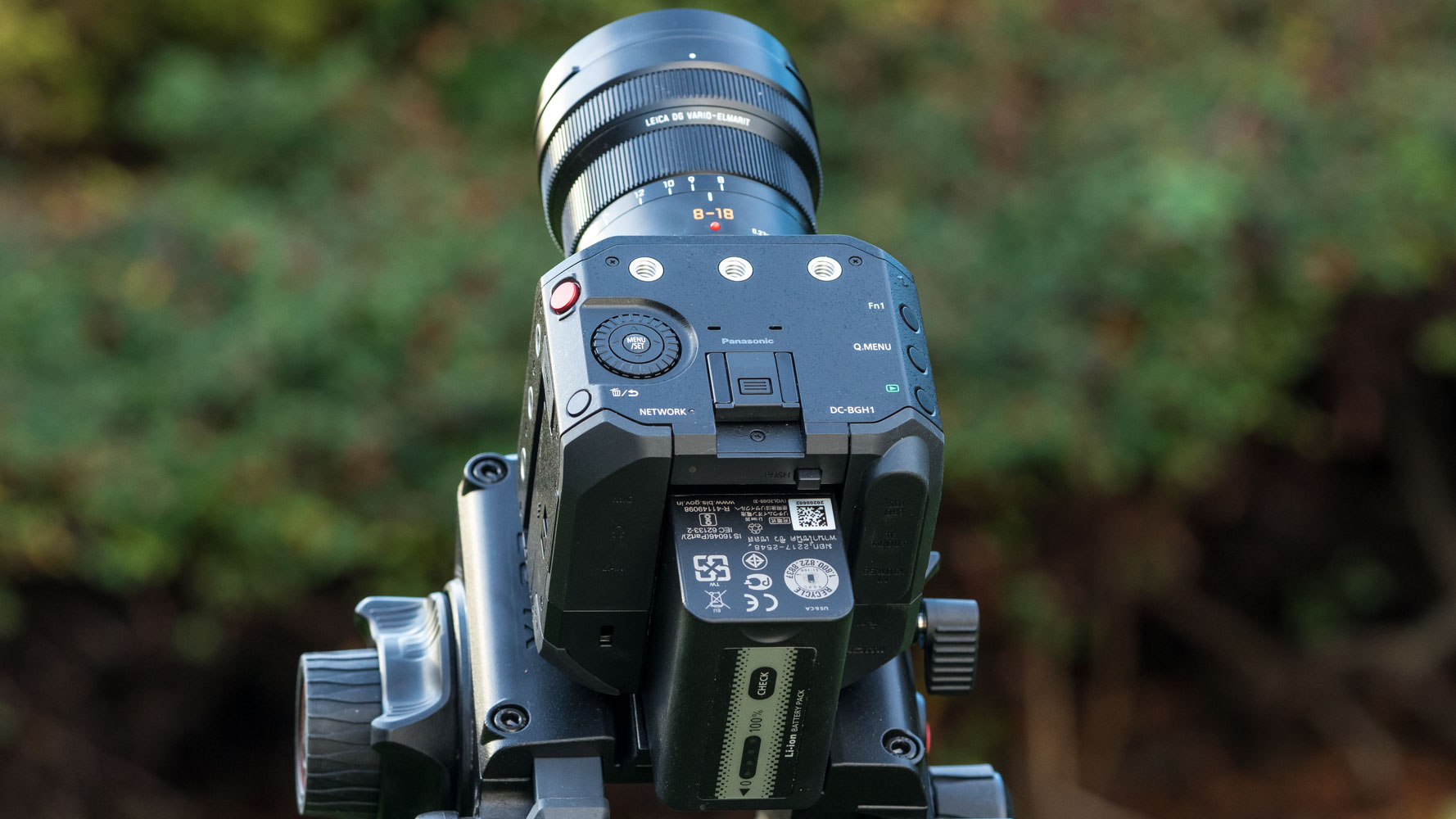
The BGH1 is a Micro Four Thirds camera that is very different to the mirrorless or cinema cameras most filmmakers use, but the world is changing and there are lots of new ways of doing things that the boxcam can be ideal for. It’s not particularly expensive for professional filmmakers as it can be the one camera that can be used for lots of different projects.
Inside it has the 10.2-megapixel Live MOS sensor of the GH5S that Panasonic say has been improved in the boxcam as the dynamic range has been upped by an additional stop to 13 stops. It can record C4K in 4:2:2 10-bit All-Intra at up to 60p, including in the built-in V-Log L gamma. There is a Dual Native ISO sensor like the big-money Panasonic Varicams which uses two circuits to create two separate native ISO settings. Noise is reduced by the camera choosing the optimal circuit to use according to the sensitivity set.
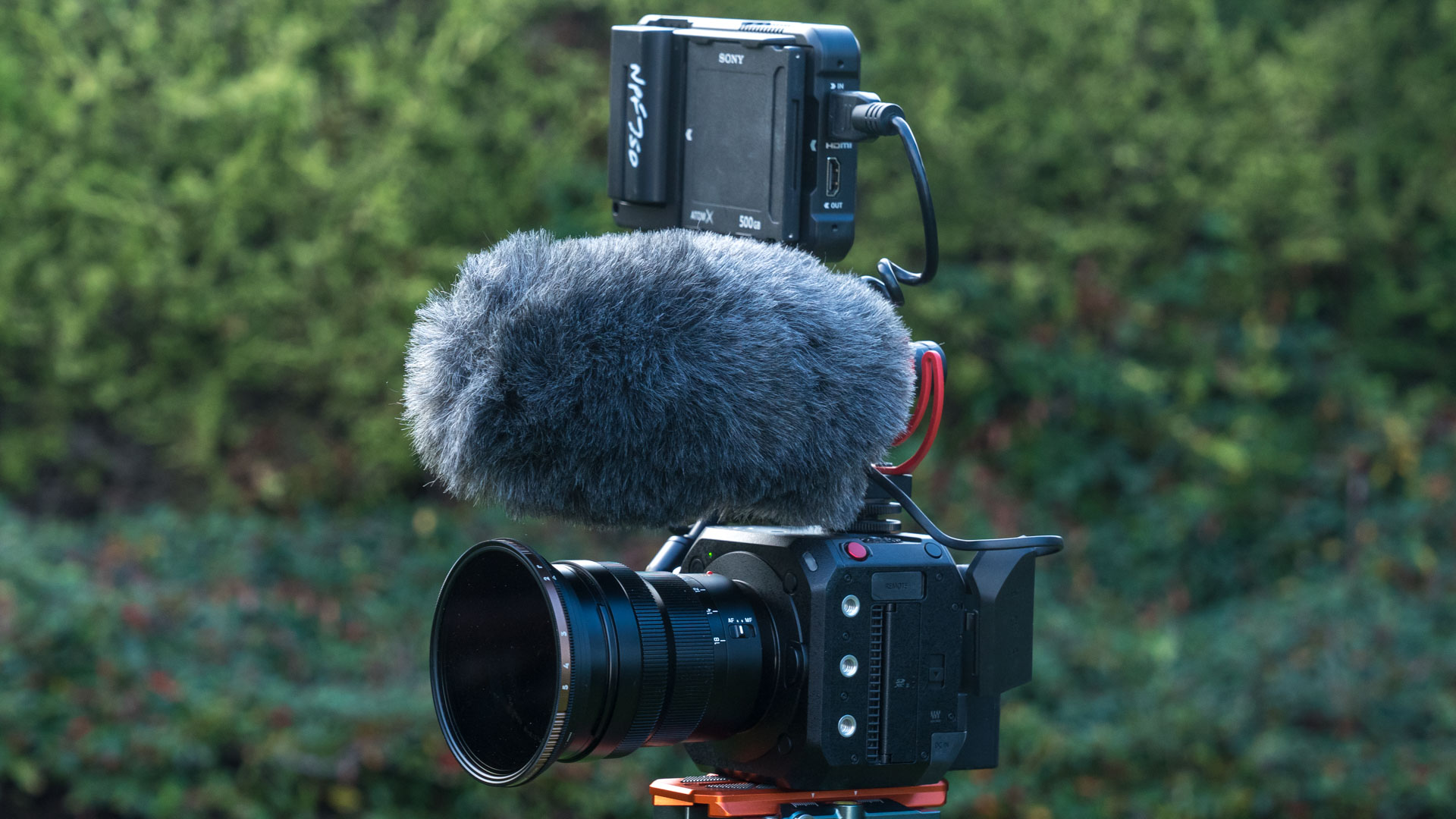
The camera records video compatible with ITU-R BT.2100 and Hybrid Log Gamma (HLG) for HDR. A low-bit-rate recording mode in C4K/4K of HEVC/H.265 for HLG is also available to save memory card space.
Marry up the BGH1 to an external recorder and it can output C4K/4K 4:2:2 10-bit via HDMI while the maximum is C4K/4K 4:2:0 10-bit when recorded to the twin internal SD memory cards.
For slow motion, there is recording in C4K/4K at 60 fps and FHD at 240fps for a maximum 10x slow-motion in 24p. Like pretty much all of the Lumix range, there is support for anamorphic shooting in 4K up to 50p, in 1.3x, 1.33x, 1.5x. 1.9x or 2x settings. Its video spec is very impressive.
Specifications
Sensor: 10.28MP Four Thirds Live MOS sensor, 17.3x13mm, Dual Native ISO
AF: Contrast detection, DFD technology
ISO range: 160-51,200 (expandable 80-204,800)
Stabilisation: None
Metering modes: Center weighted average, highlight weighted, multiple, spot
Video: C4K video up to 60p 10-bit 4:2:0 internal 4:2:2 external. FHD to 240p, internal
Viewfinder: None
LCD: None
Memory card: Twin SD/SDHC/SDXC card slots
Connectivity: USB-C, HDMI Type A, 3G-SDI, Wi-Fi, Bluetooth, ethernet, TC in/ out, Genlock in
Size: 93x93x78mm
Weight: 545g (body only)
Key features
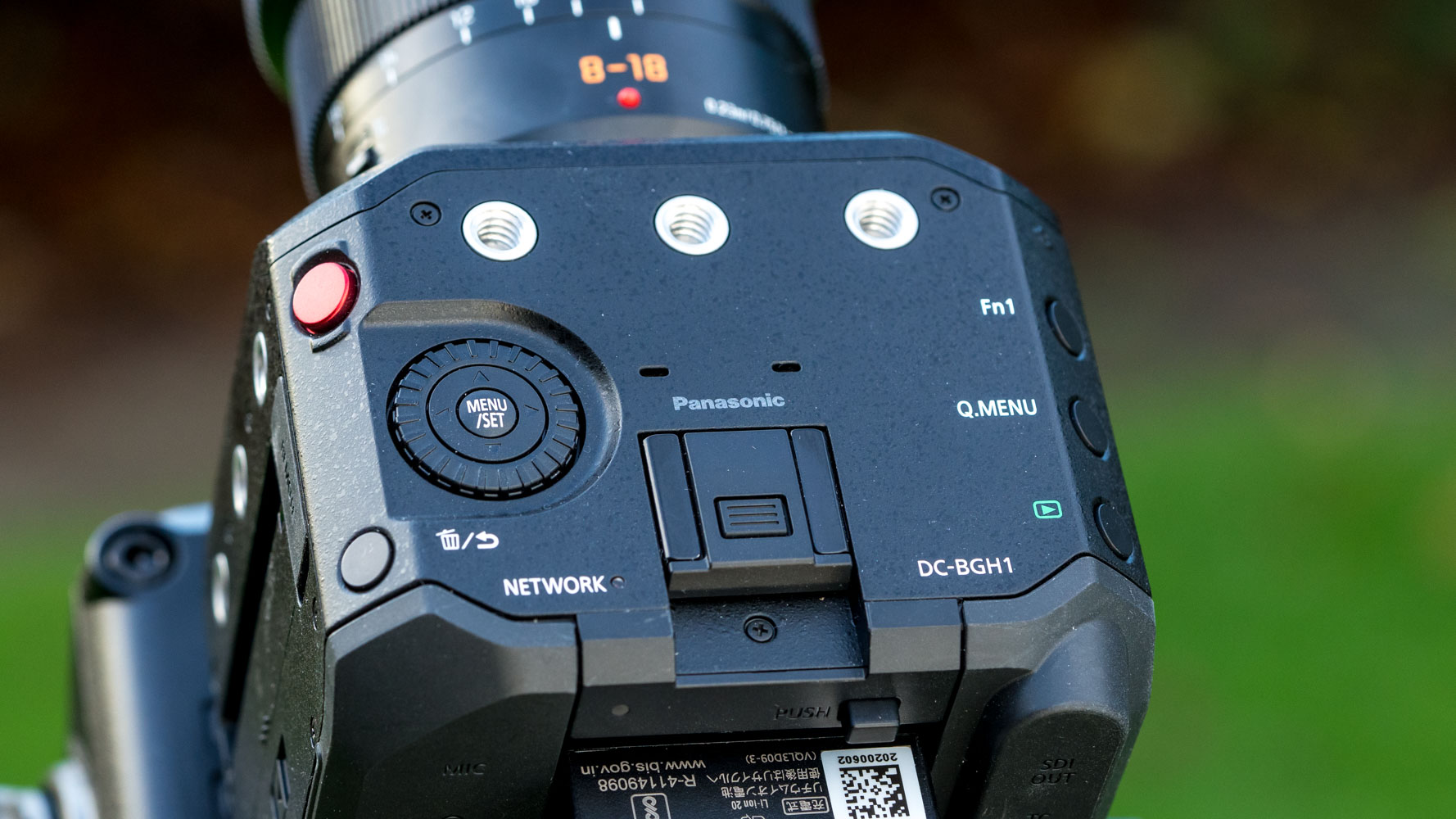
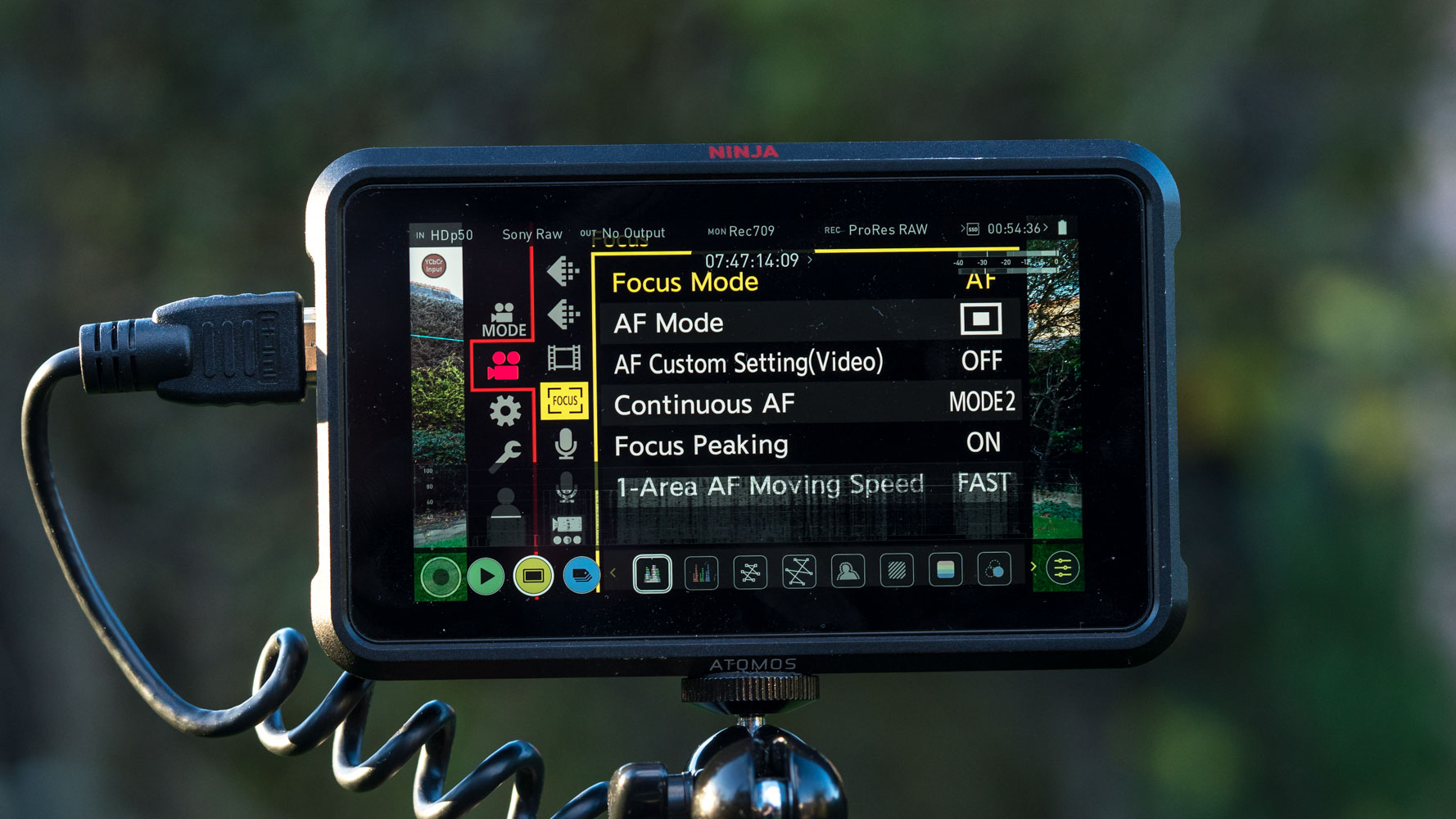
Although it has lots of uses, the main types of shoot the Lumix BGH1 will be used for are either as a run-and-gun documentary camera suitable for events and news, as a cinema camera, as a remote camera or for live streaming. It has the flexibility to be used for all of these very easily.
To use it as a documentary, events or even ENG camera, it needs an external monitor so you can see what you are filming and to be able to see and make changes to the settings. It works best with one of the fast AF zoom lenses from Panasonic or one of the other MFT manufacturers. But bear in mind there is no built-in image stabilisation. So choose a lens with it built in or else all your handheld footage will be pretty shaky. And you should also add a variable ND filter for exposure control and an external mic to record audio. If you fit the mic to the hotshoe, like the optional Panasonic XLR microphone DMW-XLR1 or a DSLR style mic, then the monitor has to be bolted to another of the mounting holes.
Alternatively, put the BGH1 on a rig with a follow focus, switch to a cine lens and you have a fine cinema camera capable of great results and shallow depth of field. As long as you choose a fast lens, that is.
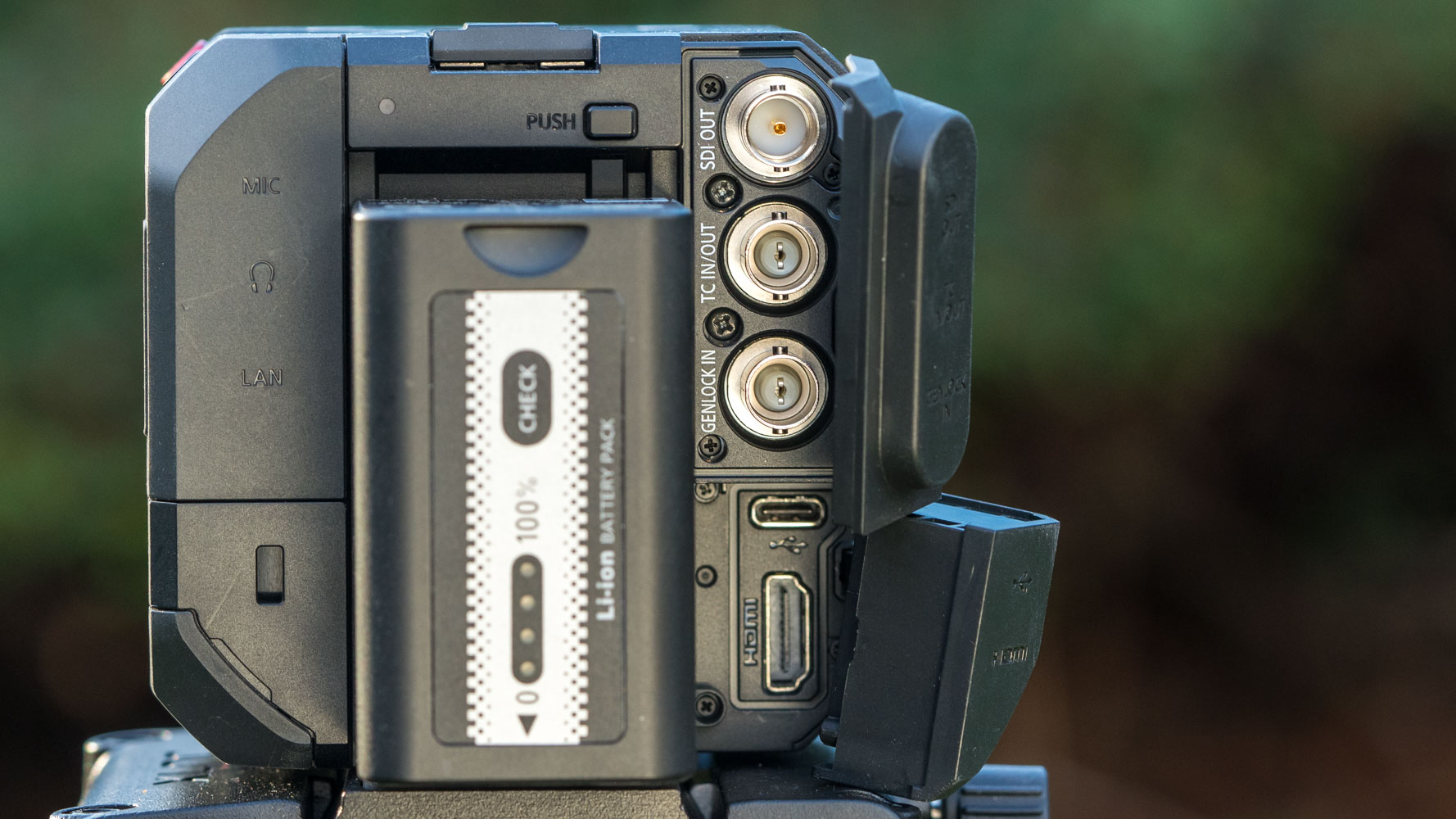
As a remote camera, such as a crash cam or for putting in places you just can’t get access to during a shoot, the BGH1 has SDI, HDMI and USB-C connections as well as Wi-Fi and Bluetooth 4.2, so it marries up to a huge range of devices. The wired connections are good in studio use or at events where you can run cables to the camera. Alternatively use wireless technology for monitoring and controlling the camera using the free Lumix Sync App on a smartphone.
And with 3G-SDI, HDMI or IP streaming, it can output to a monitor, recorder, switcher or transmitter for live streaming. You can control and power the camera via Ethernet or USB through the Lumix Tether Software or the Lumix Sync smartphone app. Professional Genlock and Timecode functions make it ideal to sync with other cameras for multi-camera editing.
The camera can be powered by external batteries, the included AC adapter or by Power over Ethernet+ (PoE+). You can control up to a dozen BGH1 cameras is using Panasonic PC software Lumix Tether for Multicam. This is the only way you can use the camera to shoot stills, so really it’s best thought of as a video-only camera.
Build and handling
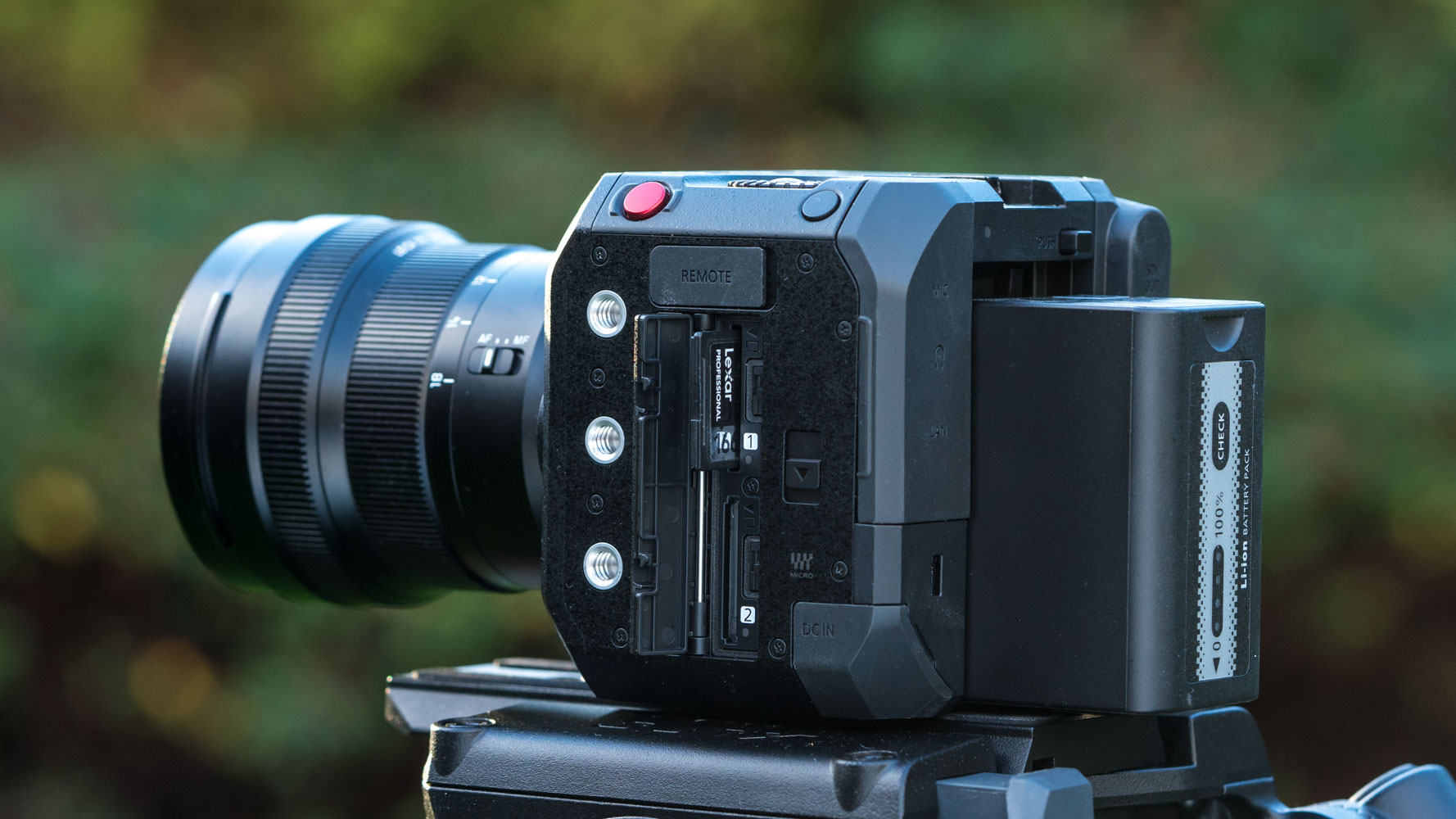
The build quality is very good, as the camera is made for professional use. It’s not weather sealed but we got caught in a downpour and it fended off the rain. The limiting factor to outdoor use in adverse conditions will be the accessories you bolt to the BGH1 as chances are an external monitor might give up the ghost before the camera does.
With a body-only weight of 545g, the Lumix BGH1 is compact and light, and the aluminium and magnesium alloy body frame is durable. The body has a cooling fan for unlimited video recording and it’s virtually silent. There is a double SD Card slot for backup recording or relay recording, behind a well-sealed card door. The body has nine standard threaded holes to fit accessories, plus a tripod mount and a hotshoe on the top. So you can fit pretty much any accessory you’d need.
All of the camera’s connections are protected by covers which can be detached to get them out of the way. There are tally lamps front and rear, and a 3.5mm audio jack. The body has a control dial and cursor buttons, as well as Function, Quick Menu, Playback and Record buttons.
As there is no viewfinder or LCD screen at all, you have to plug in an external monitor or use your smartphone and the Lumix Sync app to see what you are changing and what the camera is seeing.
We tried the camera with a basic field monitor and a monitor/ recorder too. We just plugged it into the HDMI or SDI and it worked instantly. You can then use the control dials to change settings, navigate menus and monitor the footage. If you use a recorder, it can output the recording and make a copy to the camera’s internal memory cards for instant backup.
You do need an external monitor to initially set the camera up with your smartphone, because until it’s linked up there is no way of accessing the menus with the phone. After that, a phone alone will suffice.
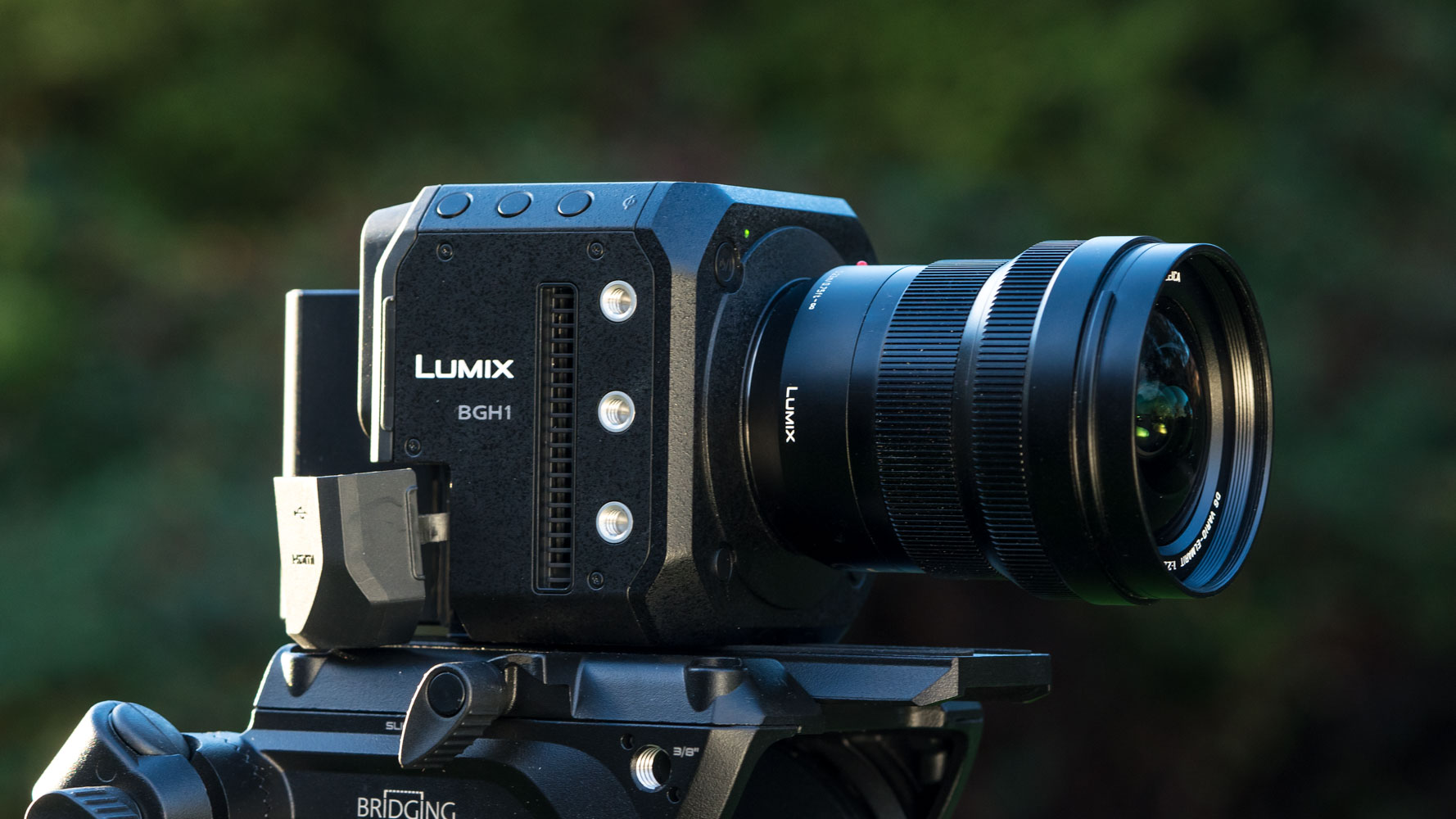
Due to its boxy nature, the camera actually feels like you are holding an old-school Hasselblad film camera in your hand. For lots of handheld use, really you’d want to bolt on some sort of side grip or top handle. It’s more useful as a tripod or gimbal-mounted camera.
If you use the camera in manual mode, then there are no obvious ISO, aperture and shutter speed dials like you’d find on most cameras. The quick Q menu lets you see lots of settings and make changes, but it isn’t as fast as a conventional mirrorless camera to use. We found it best to use the smartphone app to change settings. The handling of the whole set-up requires a learning curve.
Performance
Sample video footage shot with Panasonic GHH1
If you have ever used a Panasonic GH5S then you will find the image quality and features are pretty much identical, even though Panasonic claims that by using V-Log L, which has the same V-gamut characteristics as V-Log found in the Varicams, the dynamic range on the BGH1 is even greater. And it means V-Log LUTs can be used in grading.
For a camera with a sensor a quarter the size of full-frame, you would think there would be noise issues at high ISO but actually the footage is very clean. If you use Log then you need to add in some noise reduction in post, but if you stick to the standard colours then the footage is clean, detailed and very noise free. Even at high sensitivity settings.
We tried the camera up to its maximum resolution of C4K up to 4:2:2 10-bit recorded externally, and the images are very detailed and sharp, packed with colours. It’s very easy to grade either using the standard colours or V-Log L settings. Dropping down to HD, 8-bit and 4:2:0 settings then there is a degradation in quality, but it’s still impressive. Overall, the image quality is surprisingly good for an MFT camera, helped by the Dual Native ISO settings when light levels drop.
We did have some issues with the auto white balance, though, which was a tad hit and miss in tricky lighting. But take manual control and all is well.
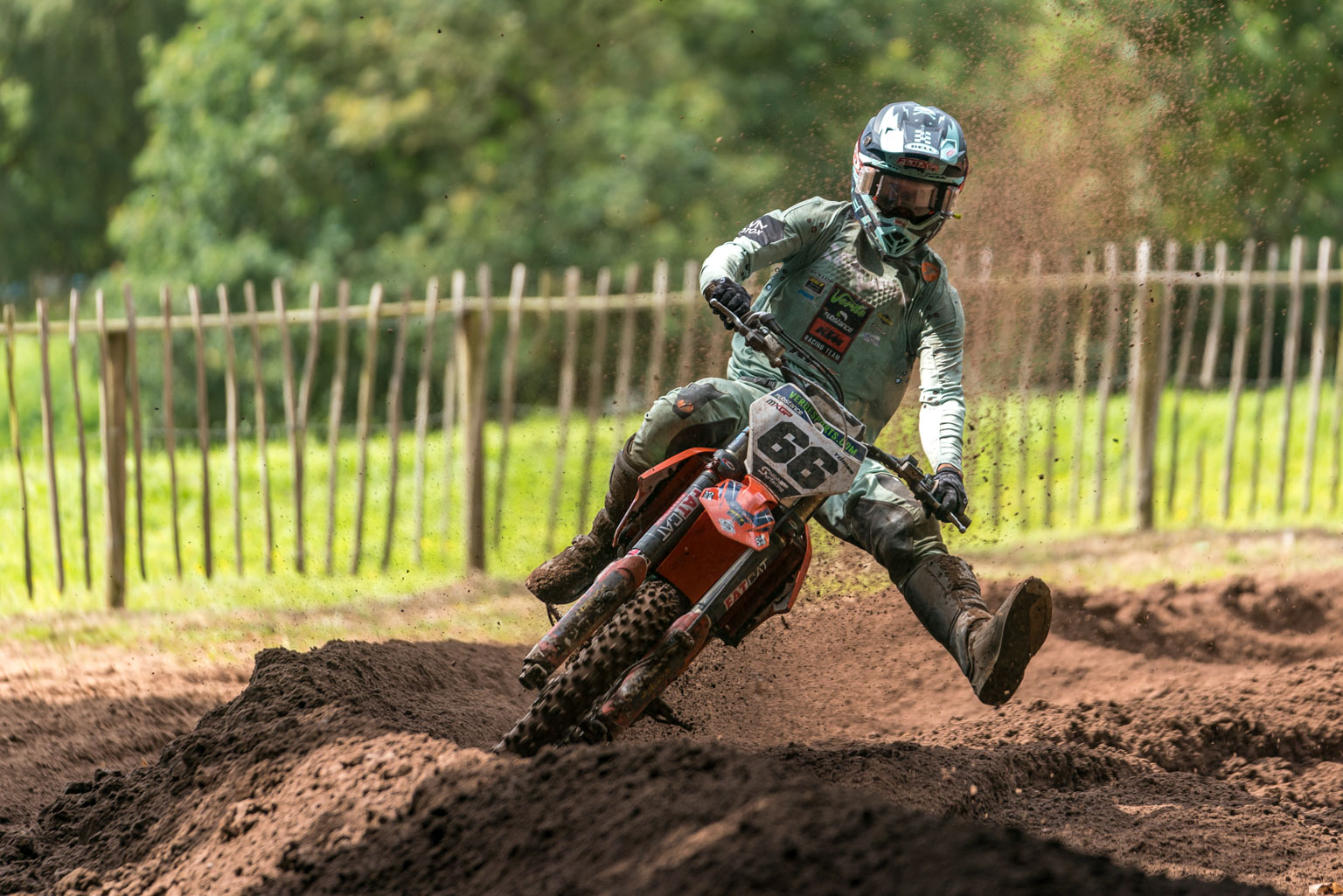
Of course, one of the biggest criticism of all the Lumix cameras is that they have not followed the pack to phase-detection AF but stick with contrast-detection and Panasonic’s own DFD technology. The AF system does have all the mod cons like subject tracking and Face and Eye Detection for both humans and animals. We actually found the AF to be precise and it has lots of customisable options. When light levels really dropped, the AF did struggle to lock on and it’s not great for fast-moving subjects, but then again, the BGH1 isn’t the camera to buy for tracking fast-moving sports subjects. For most normal situations, it worked fine. And you can always switch to MF for total control.
Verdict
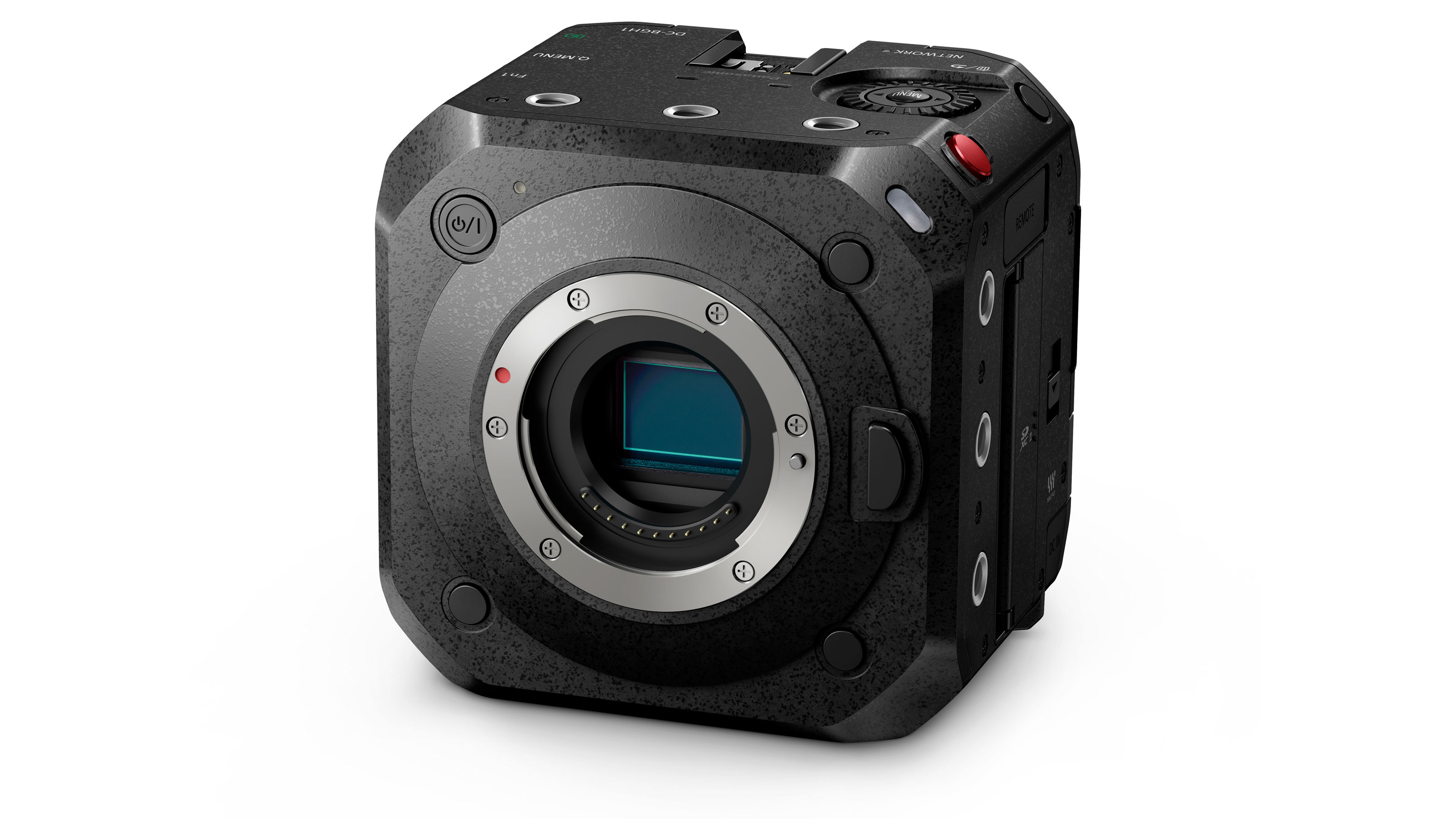
The fact that the new Panasonic Lumix BHG1 is a multi-use camera doesn’t mean it’s a jack of all trades but master of none. It is great for streaming and connectivity, for using as a remote camera and being rigged up as a cinema camera, too. For tucking it into places other cameras can’t get into, it’s ideal, such as hidden at the front of a wedding, behind a goal line, for use in a multi-camera live streaming studio, fixed to the bonnet of a car or the side of a motorbike for dramatic action shots. With lots of control options from the app to ethernet, as well as HDMI and 3G-SDI output, there are lots of professional uses for the BGH1.
What it’s not great at is being a carry-round hybrid stills-and-video camera. It’s a camera that needs carefully rigging up and setting up for each shot, and then it performs very well.
Read more:
• Best 4K cameras for video
• Best cine cameras
• Best Panasonic cameras
• Sigma fp review
Adam Duckworth is an award-winning professional photographer and videographer based in the UK. He has worked for many top magazines, newspapers and corporate clients for more than 25 years. He was named SWPP UK Commercial Photographer of the Year, and is an Associate of the British Institute of Professional Photography. He has also worked for international publications like Motor Cycle News, Racer X, The Sunday Times, The Guardian, ZOO, Golf World, Today's Golfer, and Mountain Bike Action, among others.
